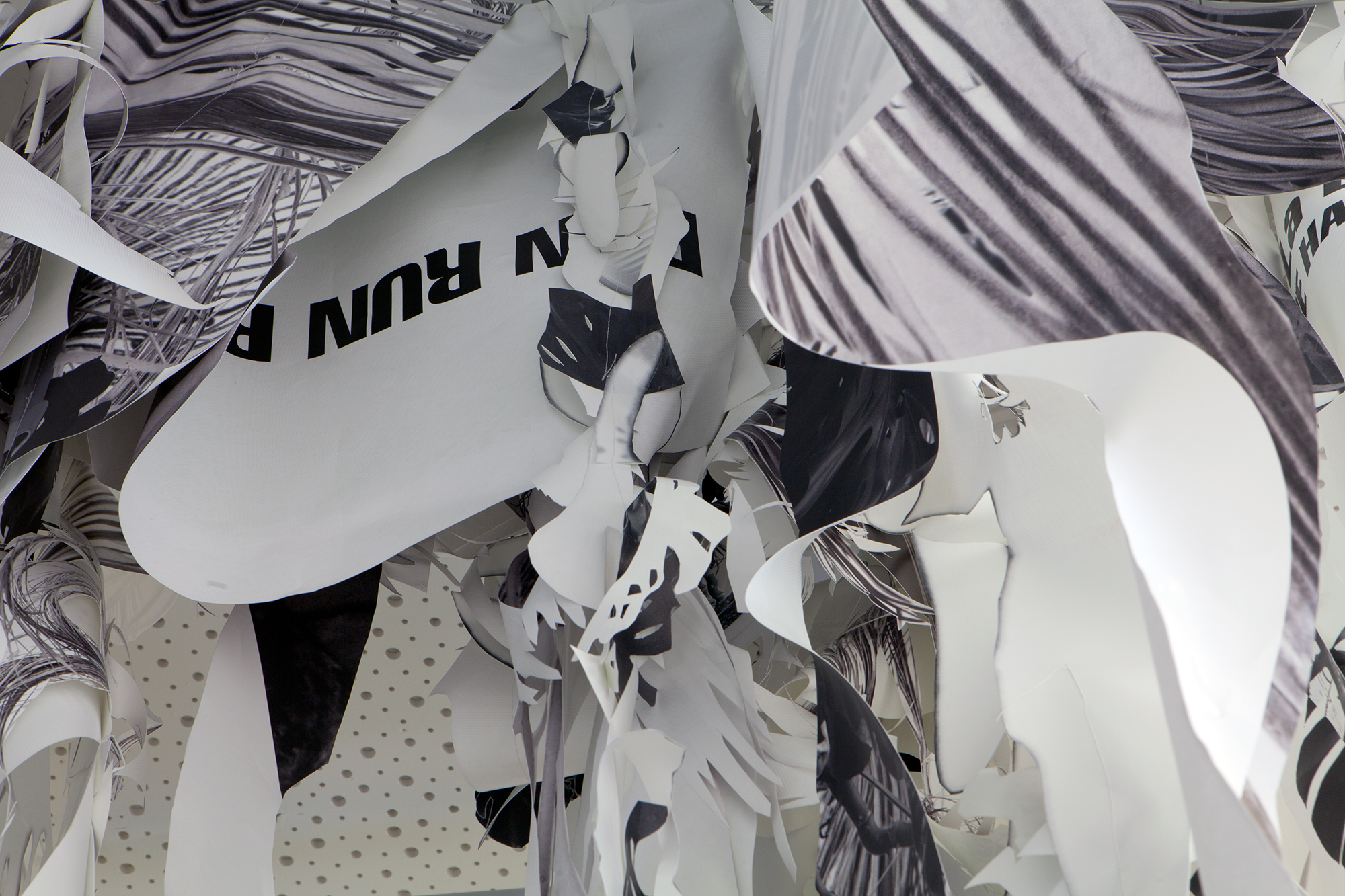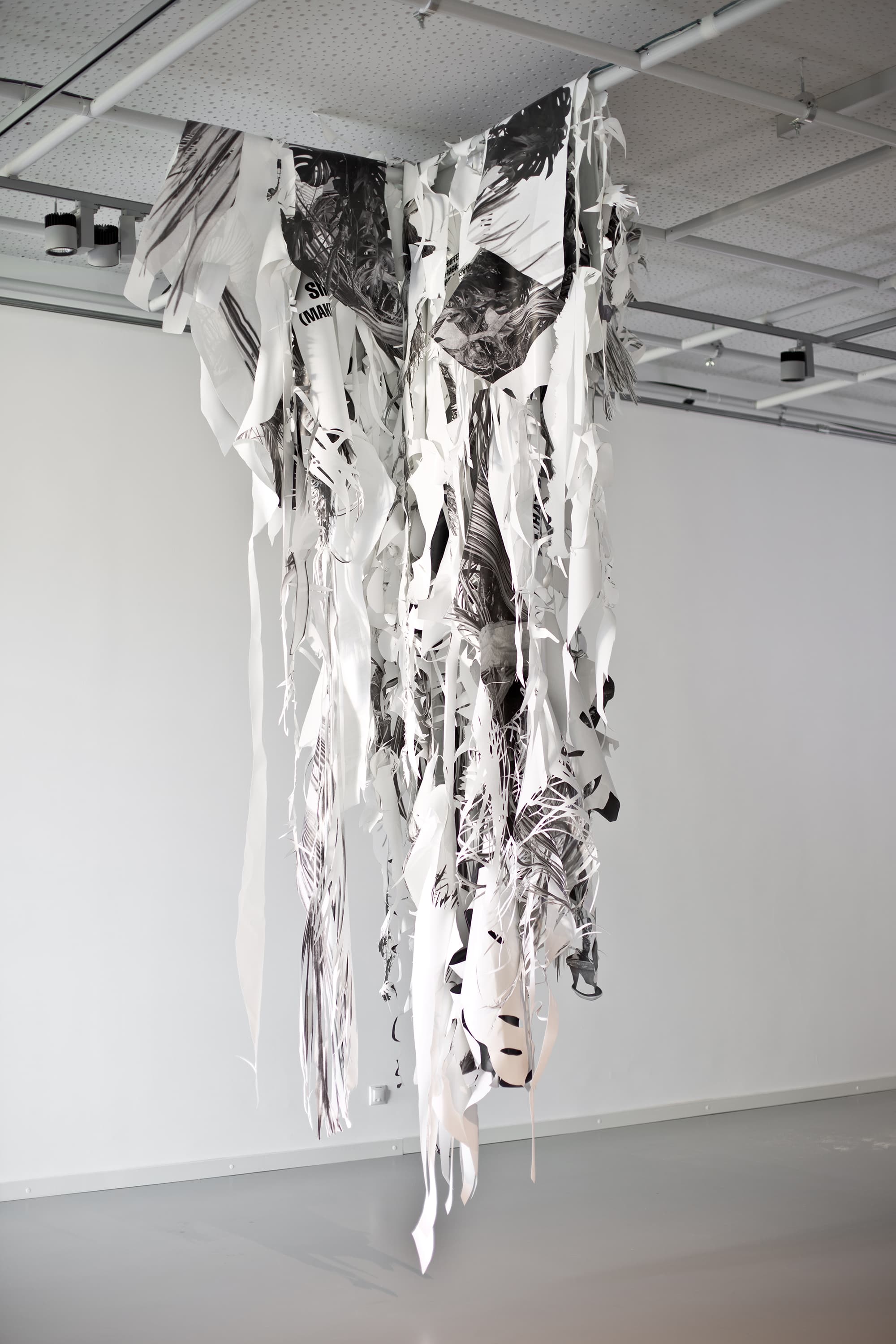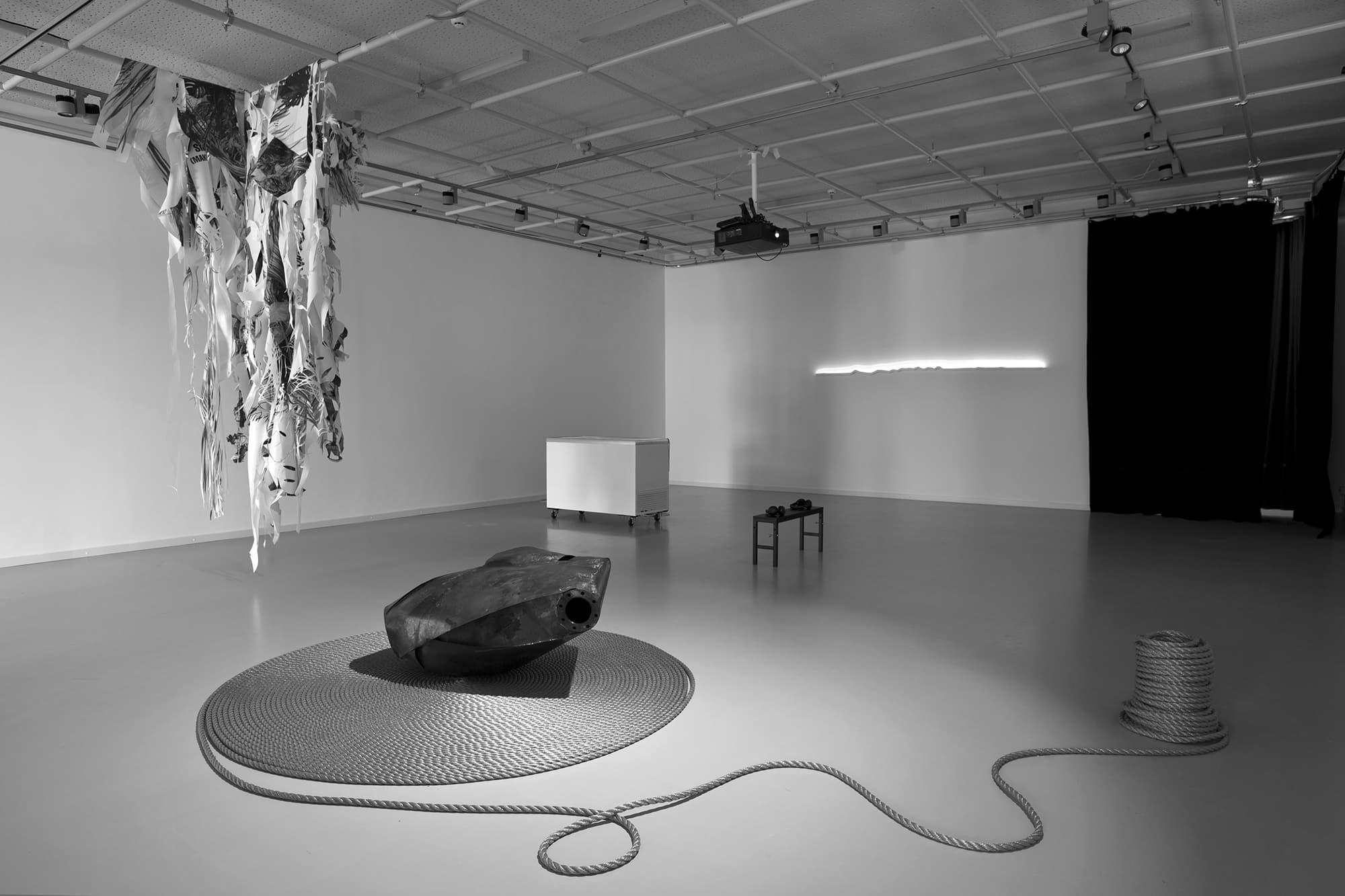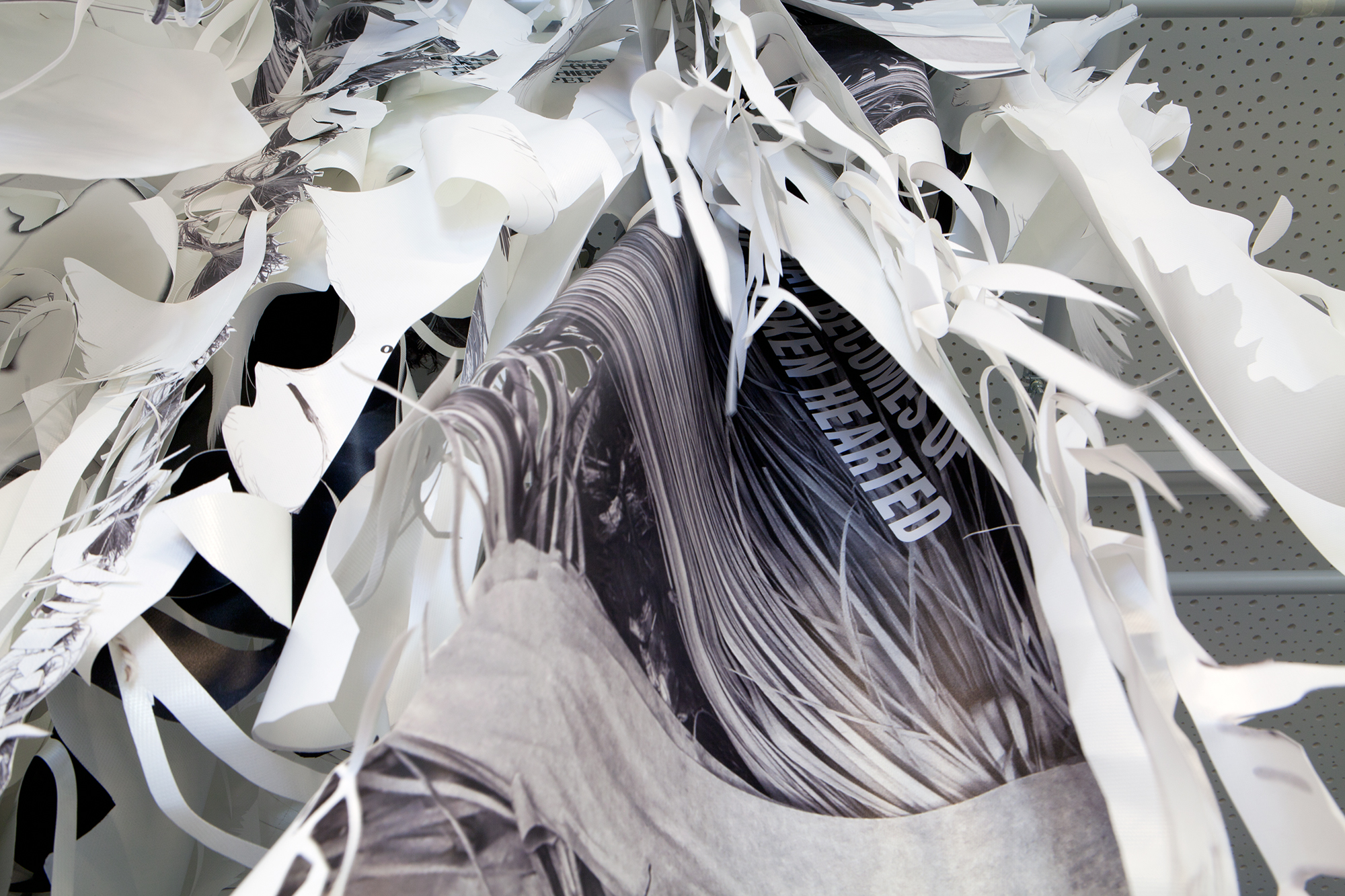



- 2016 »Thoughts of a palm tree«
- Related Work Next Project
»Hybrid(...)scapes«
2016
from the series My favorite Ladies
PVC banner printing, adhesive foil characters, size varies, up to 7 m height
As templates for printing I use the plants that I once found in Nida in the orangery and with which I worked and arranged (Never say Ever, 2012)
They have been traveling and returned.
(…) The lianas and artificial palms planted in the exhibition suggest what Nida lacks as a full-fledged resort. They grow from Franziska Nast’s diary and past experiences, quelling (our) longing. They proliferate uncontrollably not only here, but also in offices, homes and schools, reminding us of tropical lands we have never been to. Palms, particularly electric and plastic, pop up in places like regular nightclubs where the light seaside breeze or relaxed atmosphere is missing. (…)
Installation view/exhibition:
Hybrid(…)scapes, Nida Art Colony, Litauen, 2016
Exhibition artists: Pakui Hardware (LT), DISTRUKTUR (BR/DE), Franziska Nast (DE), Liddy Scheffknecht (AT), Anna Romanenko & Björn Kühn (DE), Taavi Suisalu (EE), Juha Pekka Matias Laakkonen (FIN/SE), Marika Troili (SE)
Curator: Vytautas Michelkevičius
Production:Linas Ramanauskas & Skaistė Marčienė
Facilitation: Julija Navarskaitė
The exhibition presents new works by returning residents of VAA Nida Art Colony. In June and July 2016, the artists were living and working here, developing ideas they had explored in their earlier residency periods or proposed specifically for this show. The hybrid space of the exhibition cancels the seasonal nature of Nida (summer mixes with winter), stretches time (something started three or five years ago becomes a material body now), and blurs the distinction between a concrete site – Nida – and the global world (works produced from locally sourced material or issues have relevance across the globe). The artists erase the borders between the inside and the outside, as well as between the white and the black cube (or exhibition and concert space), and play with the metaphor of the Curonian Spit as a green cube (the National Park is also a museum of the interaction of nature, culture and technology here). Hybrid spaces and landscapes open up a multifaceted perspective of the networked Neringa, Spit and Nida.